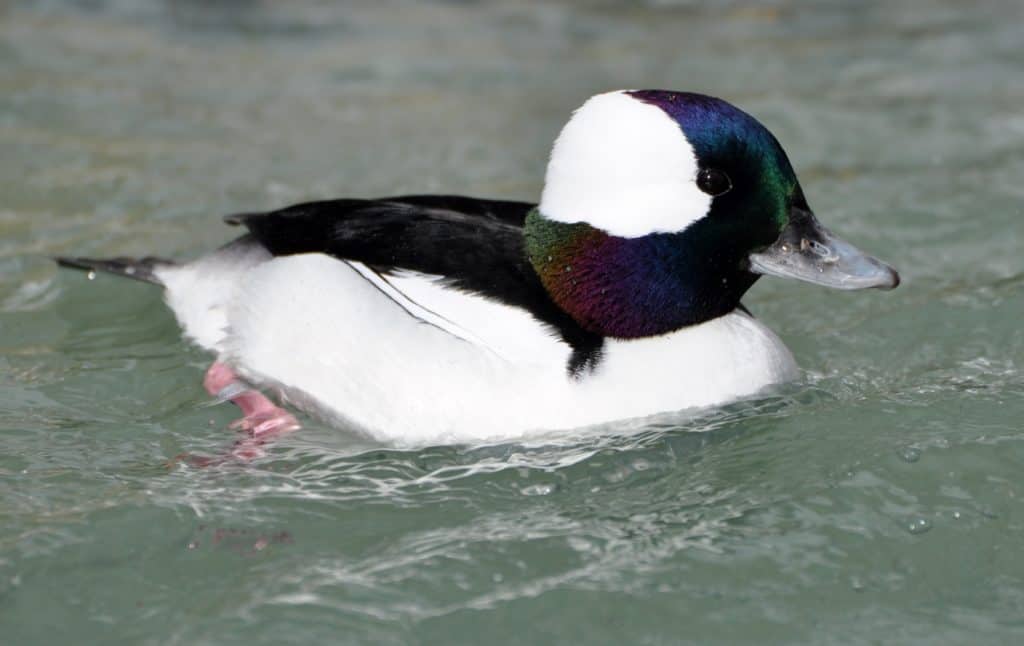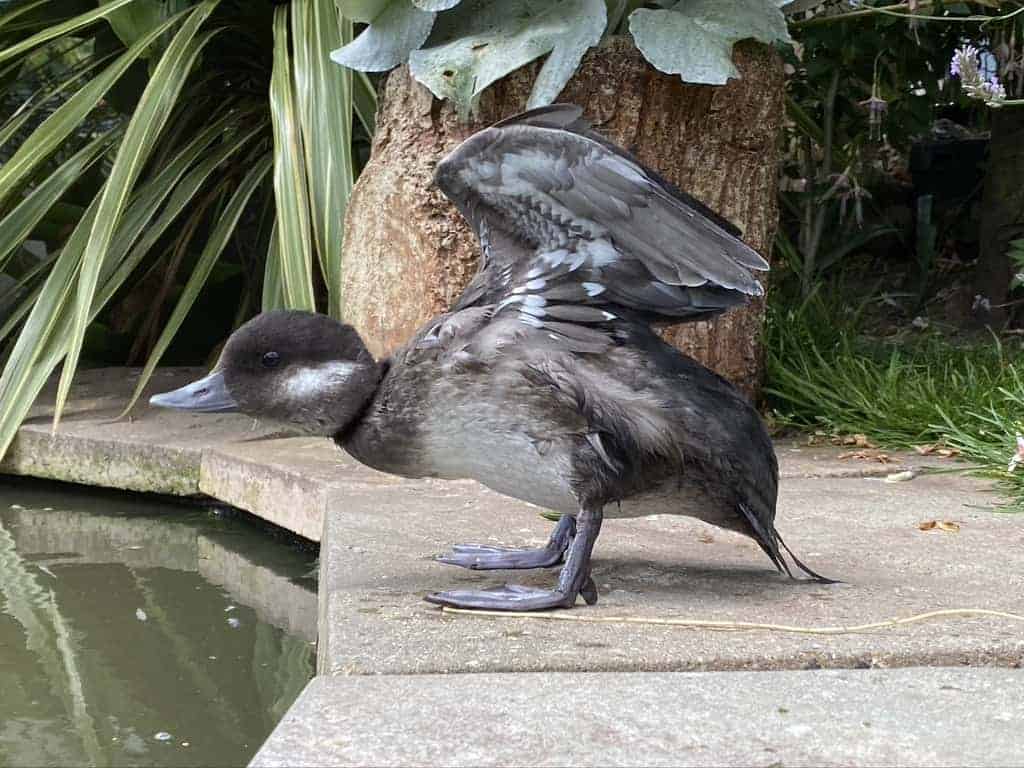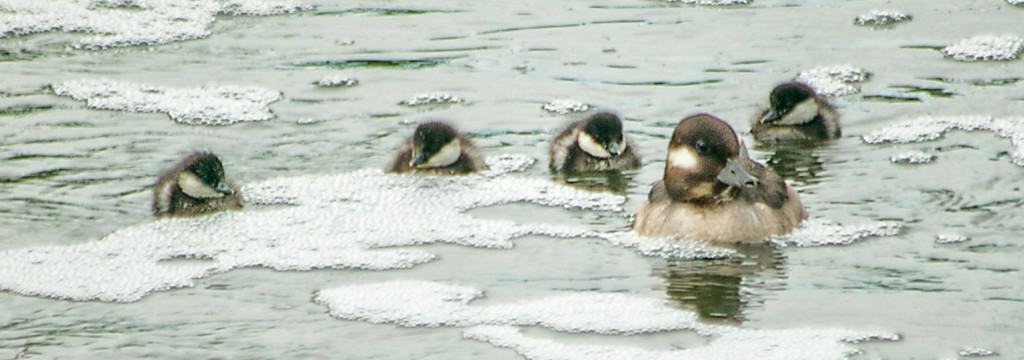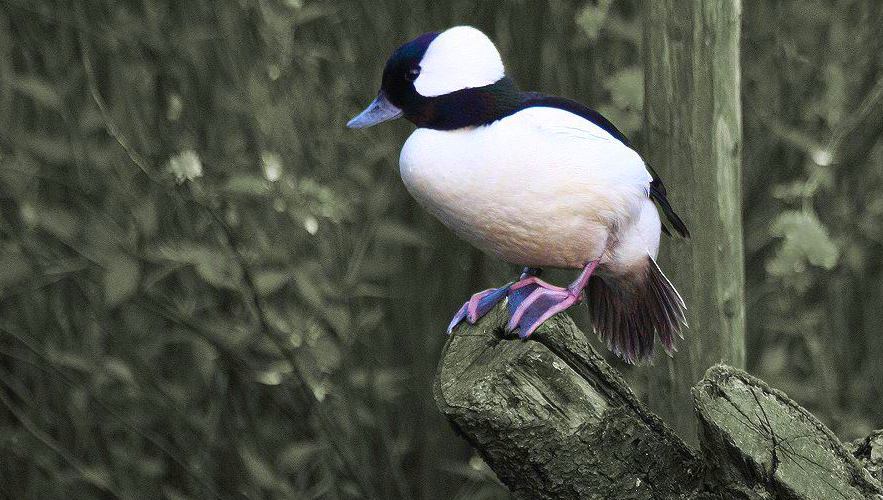Bufflehead

In North America, Bufflehead use flicker (some woodpecker species) nest holes for breeding. In captivity they will adopt log nest boxes, ideally set on a pole over water. The ducklings are difficult to rear, and can be provided with live food to encourage them to feed, though it might be a challenge to then wean them off it.

Bucephala albeola
This tiny, attractive seaduck is a congener of (belonging to the same genus as) the goldeneyes; all 3 species are less marine than some in this tribe. The Bufflehead is a widespread breeding bird in Canada and there are a few small colonies in north-west USA. Their preferred breeding habitats are inland; small freshwater ponds among trees. Most winter on the sea, on both the Atlantic and Pacific coasts. Vagrants have occasionally reached the British Isles.

Energetic, active birds, they spend much of their time diving for food. In captivity they do best on clean, deep and preferably running water, and they require a specialist high-protein pelleted diet. They are not regarded as easy to breed, but they do nest regularly in some collections where conditions are to their liking. Despite their diminutive size they are remarkably hardy.

Bufflehead like to nest in tree holes near water, often several metres up. Their eggs are quite small; clutches are between 5 and 11. Incubation is 29 to 31 days by the duck alone, who tends the ducklings until they fledge. In the wild, broods may merge, with stray ducklings being readily accepted into the crèche. The drake deserts during incubation.